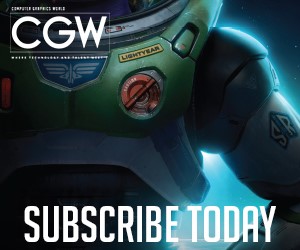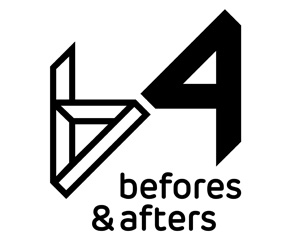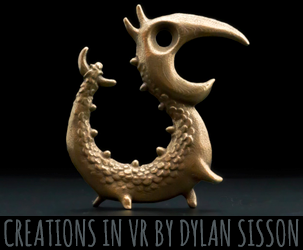


Lost Ollie: The Power of Memory
By Maria Elena Gutierrez
Created and written by Shannon Tindle and directed by Peter Ramsey, the Netflix animated adventure Lost Ollie is based on the children’s book Ollie’s Odyssey by William Joyce. It tells the story of a toy rabbit called Ollie (Jonathan Groff) who, after finding himself abandoned in a thrift shop, sets out on an epic quest to find Billy (Kesler Talbot), the boy who was once his best friend.
Above all things, Lost Ollie is a story about memory. Rejected and alone, Ollie clings desperately to the pledge he once made with Billy – that they would never forget each other. Despite this Ollie feels desperate, because he fears that this is exactly what has happened – Billy has forgotten him.
When Ollie befriends the toy clown Zozo (Tim Blake Nelson), he realizes that memory itself is the key to finding Billy again. With Zozo’s help, he re-creates the ‘memory map’ on Billy’s bedroom wall – a scrapbook of images representing ‘places we’ve been and places we hope to go.’ By following this trail of memories, maybe Ollie can find his way home.
However, as Zozo warns Ollie: “Memories are funny – you gotta sneak up on them or they’ll just disappear.”
So begins the quest, with Ollie, Zozo and the feisty pink teddy bear Rosy (Mary J. Blige) puzzling out the clues that will lead them from location to location. Throughout the adventures of these brave lost toys, the narrative relies heavily on flashbacks to remind us that memories are not only ‘funny’ but also filled with emotions that are often heartwarming, but just as frequently haunting. Lost Ollie also teaches us that memories are unreliable, mercurial and fragile. In this respect, the map is the perfect metaphor – one gust of wind and it could be lost forever.
By using memory as a narrative device, Lost Ollie takes us all the way back to the origins of storytelling. Before humans learned to write, all stories were told by word of mouth. Mnemosyne, mother of the Greek Muses, could be described as the poster-girl for this oral tradition, and it is no coincidence that she was the goddess of memory, too. After all, what finer quality can a camp-fire storyteller possess than perfect recall?
Ollie’s memory map – and the places it takes us to – gives Lost Ollie a powerful sense of place. Each new landmark is rich in American iconography, from the majestic riverboat that carries our heroes up the Ohio River, to the shining white towers of the city skyline, to the spooky abandoned fairground called Dreamland. Billy refers to a railroad train as a ‘Mark Twain’ – a clear reference to the classic novel that informs Lost Ollie’s narrative: The Adventures of Tom Sawyer. And all these visions of America are centered on the archetypal small town, where lies the home that Ollie so desperately seeks.
The flashback sequences in Lost Ollie tell a heartbreaking story of love and loss. Over the course of the show’s four episodes, we gradually learn about the human catastrophe lying at the heart of Billy’s family. Here looms the ever-present specter of death, the unspoken darkness that lurks under the skin of most great children’s literature. The difficult topic of bullying is tackled here too, mirrored in Billy’s difficulties at school and in Zozo’s reaction to his own tale of lost love.
One of the great miracles of Lost Ollie is the skill and subtlety demonstrated by the animation and visual effects team at Industrial Light & Magic, who worked with puppeteers from Jim Henson’s Creature Shop to bring Ollie and his friends to life. The animation shows impressive restraint – at all times the characters move with toy-like simplicity. Yet at the same time they communicate such a tremendous depth of emotion that we never doubt for a moment that they are real.
Just as beautiful is the world through which they journey. From the gorgeously-lit interior of the thrift shop, to the glorious vistas of the river, to the brooding rain-soaked fairground, Lost Ollie is filled with unforgettable imagery. Best of all, the visuals are always exquisitely matched to the mood. There is nothing gratuitous here – the world of Lost Ollie always looks exactly as it should.
While Lost Ollie is indeed about memory, its story is underpinned by a second theme that has equal or perhaps greater power – diversity. From the beginning, we are aware that Billy has a White father and a Polynesian mother, played by Jake Johnson and Gina Rodriguez. This is no big deal, nor is it presented as one. However, as the story reaches its climax – and especially when we learn that Ollie himself is a diverse creation, sewn together from disparate pieces of fabric – we understand the importance of diversity’s rich power within this family, within Zozo’s own story, and in the world as a whole.
As Zozo tells Ollie early on, the name Oliver means ‘peace-bringer.’ How well that name fits. Made as he is from scraps and love, Ollie is the glue that keeps everything together – Billy’s family, and the surrogate family of forgotten toys that Ollie assembles when he is lost on the road. Time and again it is Ollie’s kind, forgiving heart that saves the day – most frequently when he himself is at his lowest ebb.
All these things combine to make Lost Ollie truly unforgettable. I know that, long after viewing, the memory of this little lost rabbit will linger bright and clear, not just in my imagination but in my soul. To paraphrase the words of the poet W.S. Merwin, who provides the quote seen at the beginning of Lost Ollie: “Ollie’s absence has gone through me like thread through a needle … Everything I do is stitched with his color.”
Dr. Maria Elena Gutierrez is the CEO and Executive Director of VIEW Conference, Italy’s premier annual digital media conference. She holds a Ph.D. from Stanford University and a B.A. from the University of California Santa Cruz. VIEW Conference is committed to bringing a diversity of voices to the forefront in animation, visual effects, and video games. For more information about VIEW Conference 2022 program of events, visit or website:https://www.viewconfer



























